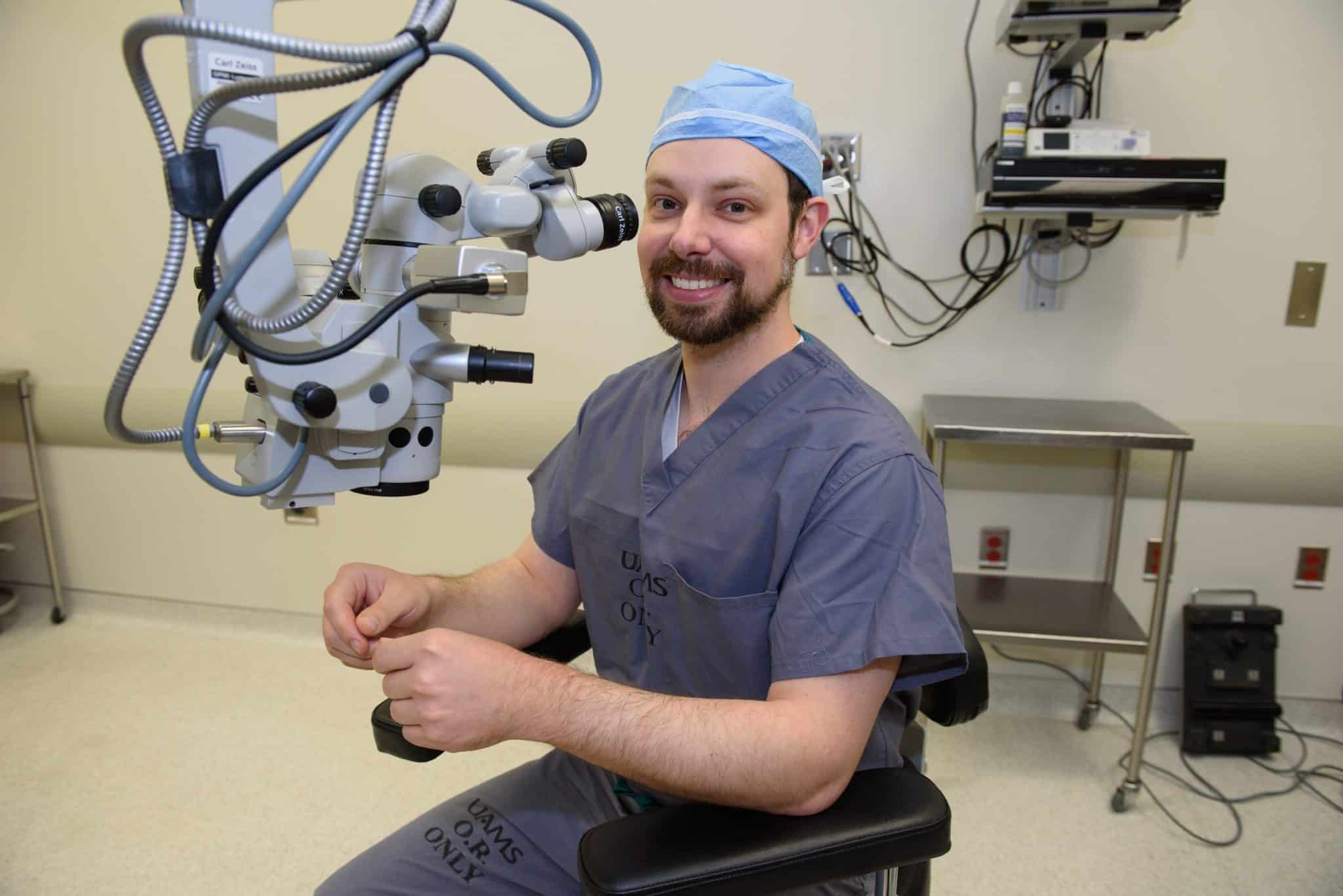View Larger Image

Riley Sanders, M.D.
Jones Eye Videos Teach while Sharing Learning
| Making, watching and posting videos on the internet may sound like the farthest thing from work.
But for Riley Sanders, M.D., a vitreoretinal surgery fellow at the UAMS Harvey & Bernice Jones Eye Institute, making internet videos is helping advance the field of ophthalmology.
Sanders has recently had almost a dozen videos he has made of surgeries with UAMS physicians Ahmed Sallam, M.D., PhD., and Sami Uwaydat, M.D., hosted by prominent websites, including the American Academy of Ophthalmology and a “YouTube for eye doctors” called EyeTube.
“I think all of us in the profession watch educational videos these days,” said Sanders. “We share techniques, complications, unusual cases, and it’s not just for students or residents still in training, but for faculty and physicians at other institutions.”
Each highly technical video includes footage captured by cameras installed in operating rooms at Jones Eye and includes a precise medical description of the surgery, noting variance in technique or patient complications that make the video instructional.
“It’s a great way to reach the community,” said Sanders. “Journal articles take time to read and digest, and that’s important to do, but with a video, it only takes a couple minutes to watch, and we get thousands of people watching our videos. It’s a convenient, quick and easy way to learn.”
Sometimes the nature of a specific surgery, if it’s unique in some way, prompts Sanders to know beforehand it needs to be recorded and shared. Other times, he’ll think of a subject and then use the archive of recorded surgeries to find footage addressing it.
Sanders edits the videos himself, then records a voice over. Making them does take time, but the end product not only helps educate others, Sanders said it makes him a better doctor.
“If you’re an athlete in sports, part of training to be the best is watching and studying video of yourself and others. Surgery is like that too as you watch your own cases and others’ cases, so I’m already doing that,” he said. “It does take extra time to do the editing and voice over, but I’m already taking a lot of time to study the film.”
Sanders said he’s working with other Jones Eye faculty to broaden the video output, and also working to involve ophthalmology residents, as well as involving medical students in the editing and production of the videos.
“There’s a personal benefit from doing these. There’s a lot to learn in making them, and then there’s the global benefit for others in the educational value of the things we’ve made.”